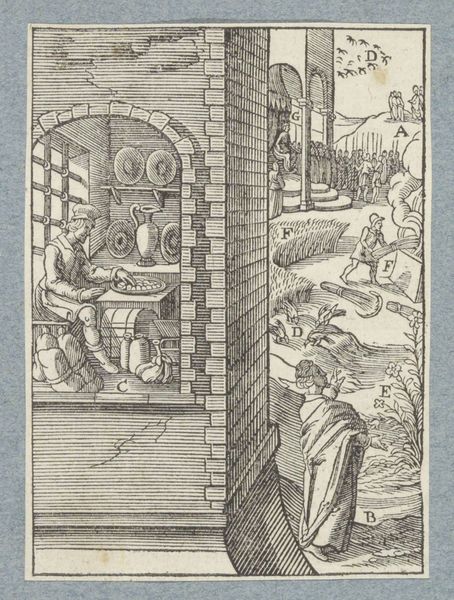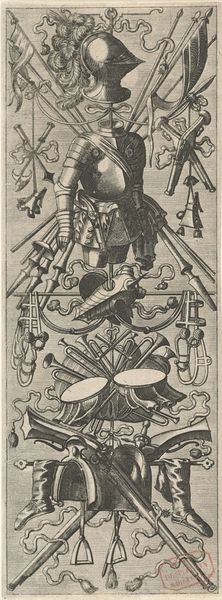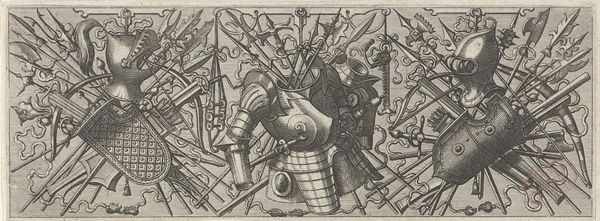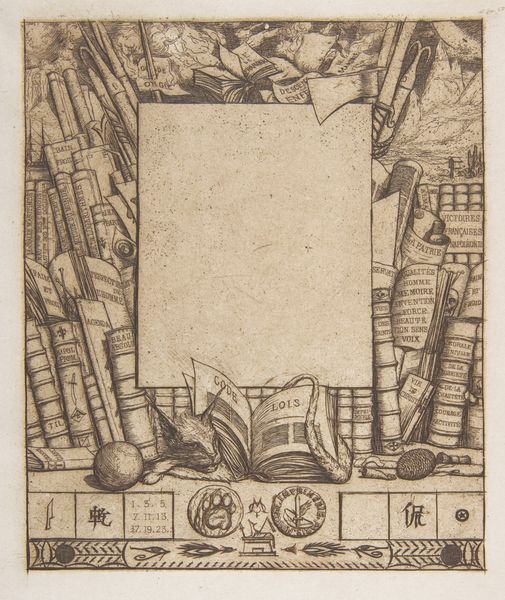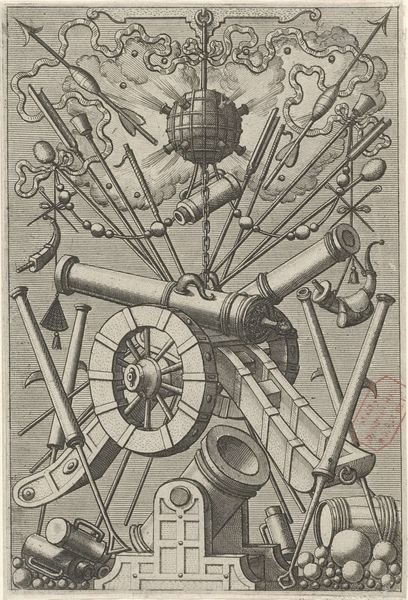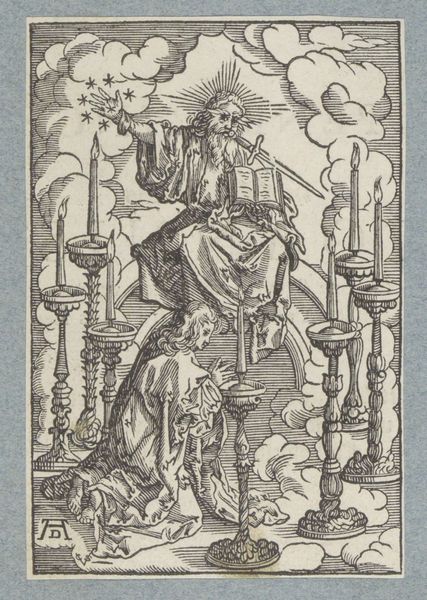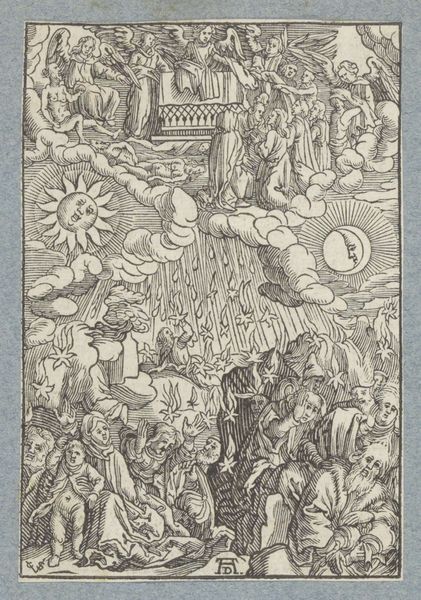
engraving
#
narrative-art
#
baroque
#
figuration
#
history-painting
#
engraving
Dimensions: height 107 mm, width 84 mm
Copyright: Rijks Museum: Open Domain
This small woodcut, “Simson’s dood”, was made by Christoffel van Sichem II sometime before his death in 1658. Woodcut is a relief printing process, where the artist carves an image into the surface of a block of wood, leaving the printing parts level with the surface, and removing the non-printing parts. Consider the labor involved. Sichem would have used knives and gouges to painstakingly remove slivers of wood from the block. The remaining raised areas form the image we see: Samson, hero of the Old Testament, destroyed along with his Philistine enemies as the temple collapses. The stark contrast between the black lines and the white paper gives the scene a dramatic, graphic quality. The cross-hatching creates a sense of depth and shadow, which would have been incredibly time-consuming. Woodcut was a relatively democratic medium, capable of producing multiple copies at a relatively low cost. So while Sichem’s skill is evident, the process also reflects a wider social context of reproduction and dissemination of images. It encourages us to look beyond the image itself, and to appreciate the hands-on work and wider cultural implications of its making.
Comments
No comments
Be the first to comment and join the conversation on the ultimate creative platform.
